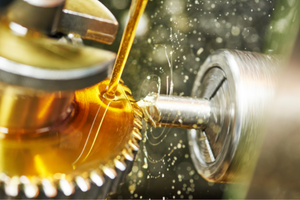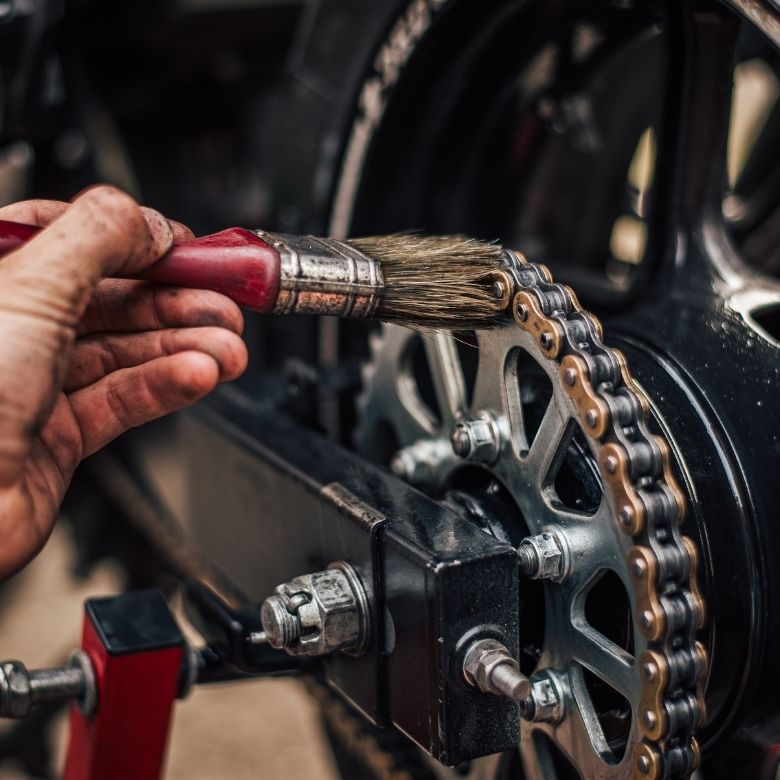Industrial growth is an inseparable part of the modern world. With it, many sectors evolve, including lubricant engineering. The developments in the sector involve process engineering, such as retrofitting of processing equipment and implementation of the state-of-the-art manufacturing processes, as well as improvement of lubricant performance.

The correct performance, life, and reliability of modern industrial equipment require process and lubricating oils, cutting fluids, and greases. These products should be of the best quality possible and specified correctly for the intended equipment, which includes optimum parameters of viscosity. It is the task of lubricant manufacturers to improve the performance of their products. This is essential due to the increasing requirements of modern technologies, codes, and international standards. Controlling the performance of lubricants provides many benefits, such as extended operating life of lubricated equipment with reduction of their failure rates, extended life of the lubricants, and easier access to the data of machine health.
This article explains what lubricants are comprised of, their intended uses, and the chemical and physical properties needed for the lubricants to perform as expected.
The composition of lubricants
Modern lubricants may comprise a wide range of base liquids and chemical additives. The lubricants must fulfil various standards of performance specification and ensure proper operation of the lubricated products. The specifications include the physical and chemical properties of the formulated oil and ensure its continued performance and protection of the engines or machines in service.
Although many of the properties are enhanced or modified by applying lubricant additives, understanding the properties of the base oils, especially their limits, is key to an effective formulation of any lubricant.
The base liquid has several functions, but it primarily separates the moving and mating surfaces in a machine, minimising friction. Many properties of lubricants are enhanced or solely the result of special additives used with the base liquid. For example, antioxidants are used to improve the oxidation stability and degradation rate of engine oils. Special additives determine the anti-wear properties of lubricants. The base liquid is the carrier for the additives and must maintain them in solution.

What are the desired chemical properties of lubricants?
Aside from their basic function of reducing friction and protecting machines’ structural components, modern lubricating oils do many other things. Friction generates heat, so lubricants should provide a cooling effect to remove this heat. Cutting fluids, or cutting lubricants, include water, emulsions, and mineral oils. Water has the best cooling performance but significantly poor lubricating action when compared to mineral oils. Oils, however, have a reduced heat removal efficiency in comparison. It is important to find the optimum ratio of cooling to lubrication that will improve the life of machines. Another function of lubricants is to prevent the formation of corrosion cells, to clean, and to seal.
Given the applications discussed so far, lubricants need to feature several optimum properties, which include:
Viscosity and its index
Viscosity is a measure of the internal friction of a liquid, representing how its molecules interact. It is a major feature of lubricants, which determines how good an oil is at forming lubricating films or minimising friction and wear of machine structural components. The viscosity index specifies how the viscosity responds to changes in temperature. The higher the viscosity index of a lubricating oil is, the better its performance.
Oxidation resistance
Degradation of lubricants by mechanisms of oxidation is potentially a grave issue. Although a formulated lubricant may initially feature many desired properties, oxidation may result in a staggering loss of performance. The process of oxidation first leads to a change in the lubricant’s acid number (increasing the risk of corrosion) and reduces the viscosity (reducing the lubrication performance). An evident symptom of oil oxidation is a change of its colour.
A number of lubricant stability tests have been developed to measure resistance to oxidation in varying conditions which are correlated to different applications of lubricants.
Corrosion resistance
The base oil of a lubricant cannot have components which initiate corrosion of metal parts in engines or machines. Corrosion tests usually involve contact of the base oil sample with a metallic surface under controlled conditions. Discolouration of metal, changes to the surface, or loss of metal mass can be used to measure the affinity of an oil for corrosion. Tests have also been developed to measure the anti-corrosive properties of oils under unfavourable conditions, such as the presence of water, brine, or post-combustion acids.
Compatibility with seals
Lubricants may have contact with rubber or plastic seals in machines. The contact with an oil may affect the strength and ‘swelling’ of the seals. There are various tests to measure the effect of base oils on different seals, under different test conditions.
Foaming
Another important property of lubricants which ensures the correct performance of machines and equipment is low foaming. It is important, especially in hydraulic systems. Moreover, lubricants should degas quickly to improve the prevention of erosion by cavitation.

PCC Group Range
Lubricants are one of the main application areas in the development of polyols at the PCC Rokita Group. It drives continuous expansion of the product offer, which features many and diverse commercially available products. The lubricants in the PCC product portfolio include new synthetic oils, hydraulic fluid oil bases, and water-soluble base oils. The water-soluble base oils are used as synthetic base oils and additives in the lubricant and cutting fluid industries.
Rokolub products are the base oils for industrial-grade transmission systems, compressors, hydraulic fluids, textile processing applications, and cutting fluids. This group of products includes polyalkylene glycols (PAG), both water-soluble (Rokolub series 50-B and Rokolub series 60-D) and non-water soluble (Rokolub series P-B and Rokolub series PO-D), and with phosphate esters (Rokolub series FR I and Rokolub series FR T). These products are capable of heat transmission, providing clean operation of machines and equipment. They also outperform mineral oils in reducing carbon formation and deposits. The functional additives for lubricating oils and cutting fluids include Rokolub series AD and Chemfac series PB. These products facilitate the production of oils with improved anti-wear and anti-galling properties, which extend the operating life of machines.
The portfolio of the PCC Group includes diverse additives for cooling liquid formulas. The range of application properties in the available products is very wide. It facilitates precise specification of lubricants per the customer’s needs. One of the largest product groups here are ROKAnols. This group features ROKAnols with enhanced degreasing performance (ROKAnol series GA and NL), emulsifying performance (ROKAnol series K and O), wetting performance (ROKAnol series ID and ROKAnol series IT), and low-foaming performance (ROKAnol series LP). There are also other product groups available as emulsifiers or low-foaming/anti-foaming additives for many industrial applications.
The PCC Group provides comprehensive assistance in the selection of the right products for the customer’s needs, and the detailed range of these products can be found on PCC Group products catalog.